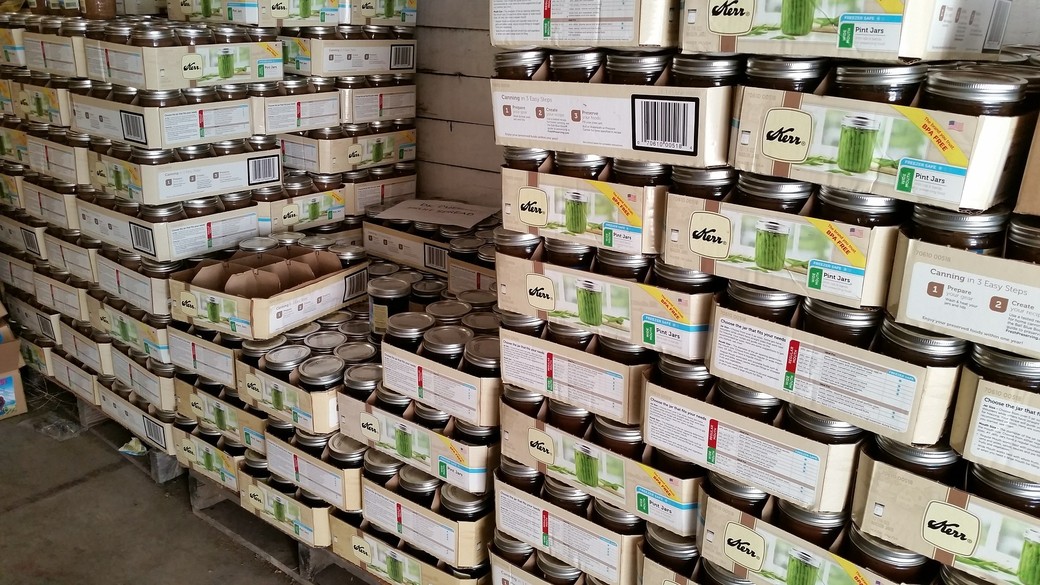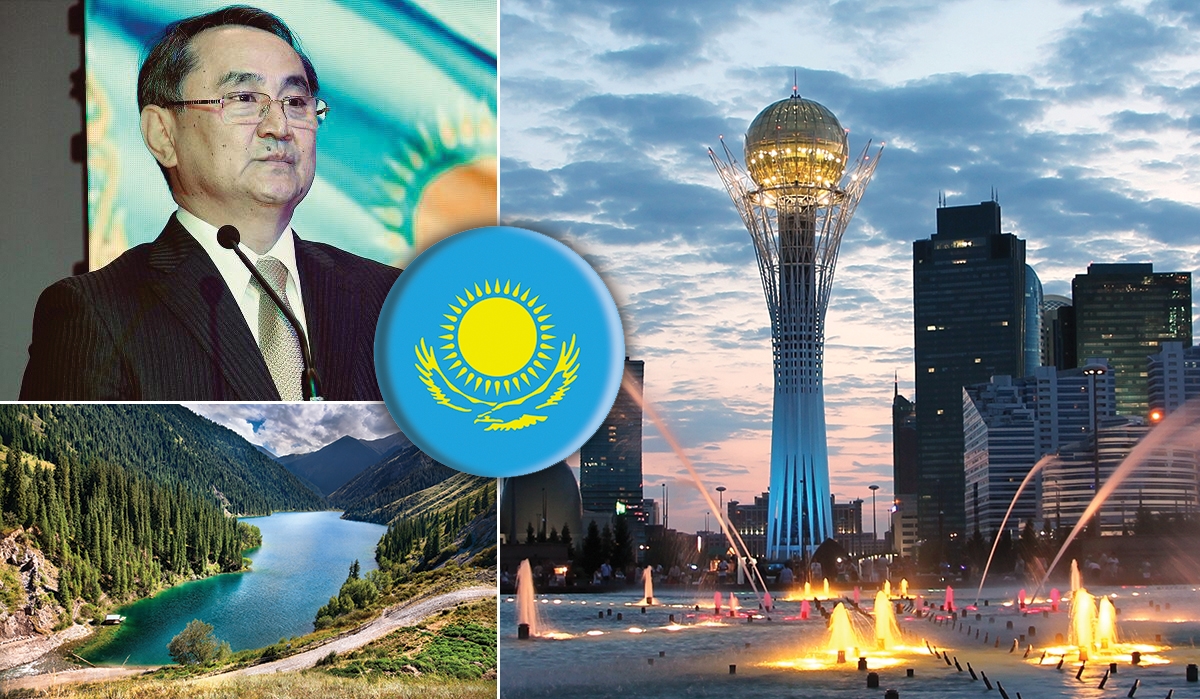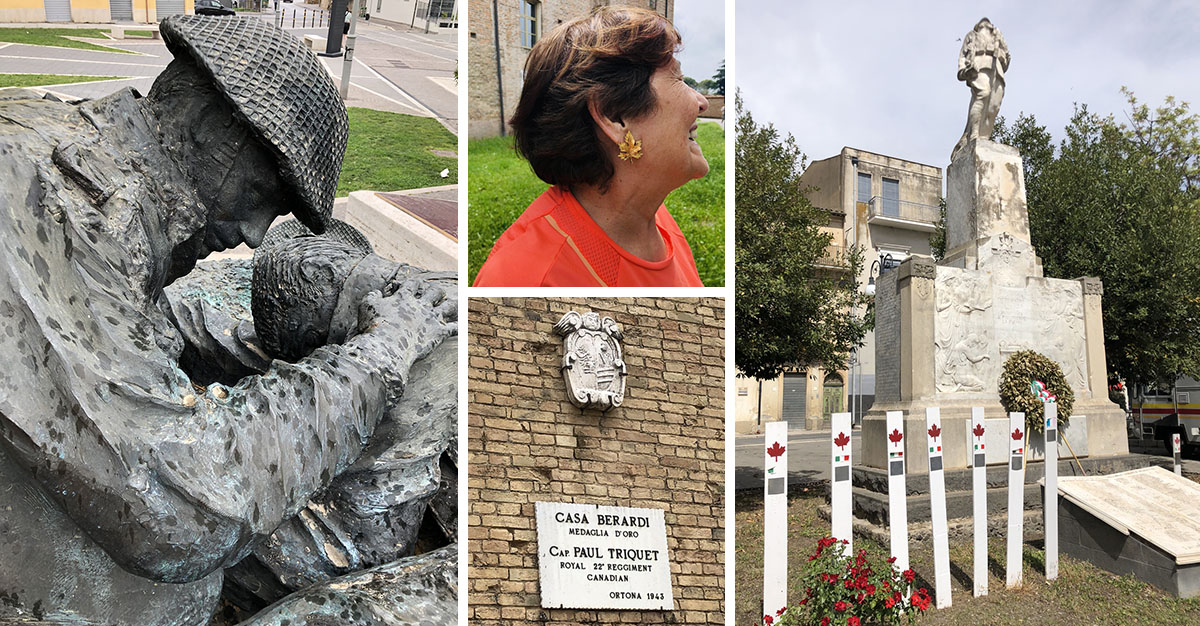
Let’s Not Forget the ‘D-Day Dodgers’ – the Italian People Haven’t
In June 1944, Lady Nancy Astor, a member of the British Parliament reputedly gave a speech in which she referred to the Allied troops then fighting the Nazis in Italy as the ‘D-Day Dodgers’; implying they were missing the real fight then raging across Normandy. Though she denied making the remark, the sentiment ignored the fact that Canadian, British and American troops had been fighting in Sicily and up the ‘boot’ of Italy since July of 1943. Four hundred and eighty-five Canadians would die in the liberation of Sicily and are buried at the Agira Canadian War Cemetery. Another 2,000 would die by the end of 1943, including more than 500 in the month of December alone during the battles in and around the Adriatic seaport of Ortona.
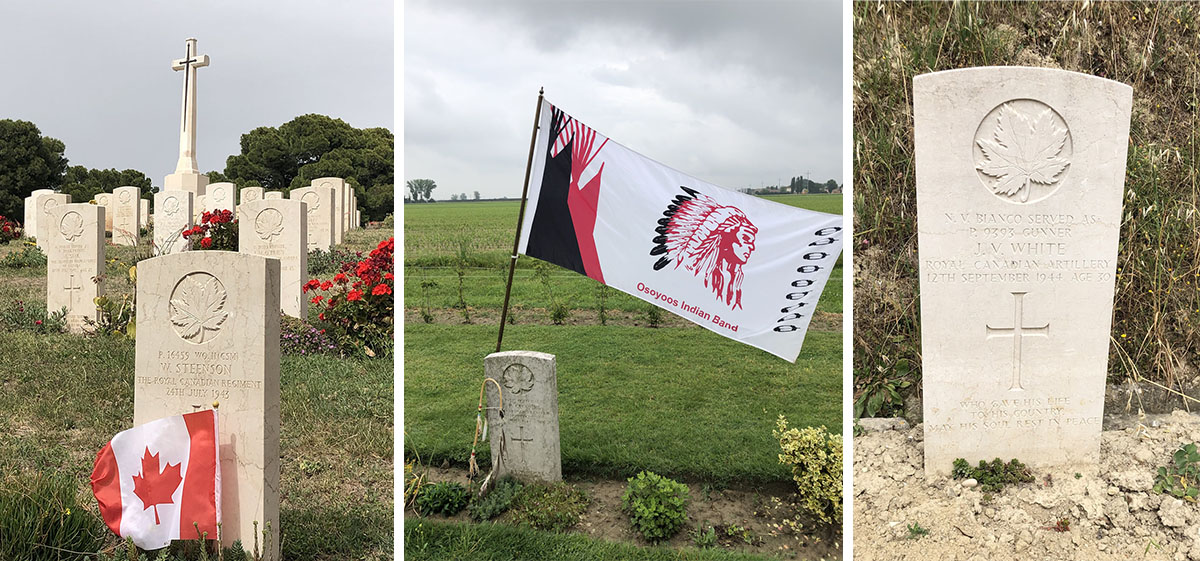
On the eve of the commencement of 80th-anniversary celebrations of the D-Day invasion of France, I have just returned from a two-week battlefield tour of Italy, tracing the route of the Canadian First Division from the landing beaches near Pachino Sicily through the Moro River battles to Ortona, the fight for the Liri Valley highlighting the Canadian smashing of the German fortified defensive lines south of Rome; the Gustav, and Hitler Lines. These victories opened the road to Rome, seeing its liberation by American forces on June 4, 1944. News of D-Day two days later would relegate this accomplishment to the back pages then and now, literally and figuratively. The tour was organized by Canadian company Liberation Tours and featured noted military historian and writer Mark Zuehlke, who has authored several books on the Canadian military in the Italian Campaign.
Most participants had a personal connection to this time in history, mine being by marriage; my late father-in-law Neil Surrette was a gunner in the Royal Canadian Horse Artillery. Enlisting underage in 1941, he served in England, where he trained and marched and then marched some more. In July 1943, he, along with 26,000 other Canadians and more than 100,000 British and American troops, landed on the beaches of southern Sicily in “Operation Husky”. In February 1945, his regiment was shipped to France and fought in the battles to liberate the Netherlands, ending the war on German soil. But for 20 bloody months, they fought elite units of the German army in the hot, arid hills of Sicily, the now beautiful rolling hills near the Apennine Mountains, the olive groves and vineyards along the Adriatic Sea, and flat farmlands of the Liri Valley under the watchful eye of Monte Cassino.

May was a month of remembrance in the Liri Valley as town after town commemorated their liberation from German occupation and oppression 80 years ago. On May 23rd, our group attended a wreath laying at a Canadian war monument in the town of Aquino, the birthplace of St. Thomas Aquinas. The mayor of Aquino presided over the ceremony, resplendent in his sash of office. School children attended, as did representatives of the local Polizia and the national Carabinieri police force. Our tour group along with a busload of veterans from the Princess Patricia’s Canadian Light Infantry (PPCLI) formed the Canadian contingent.
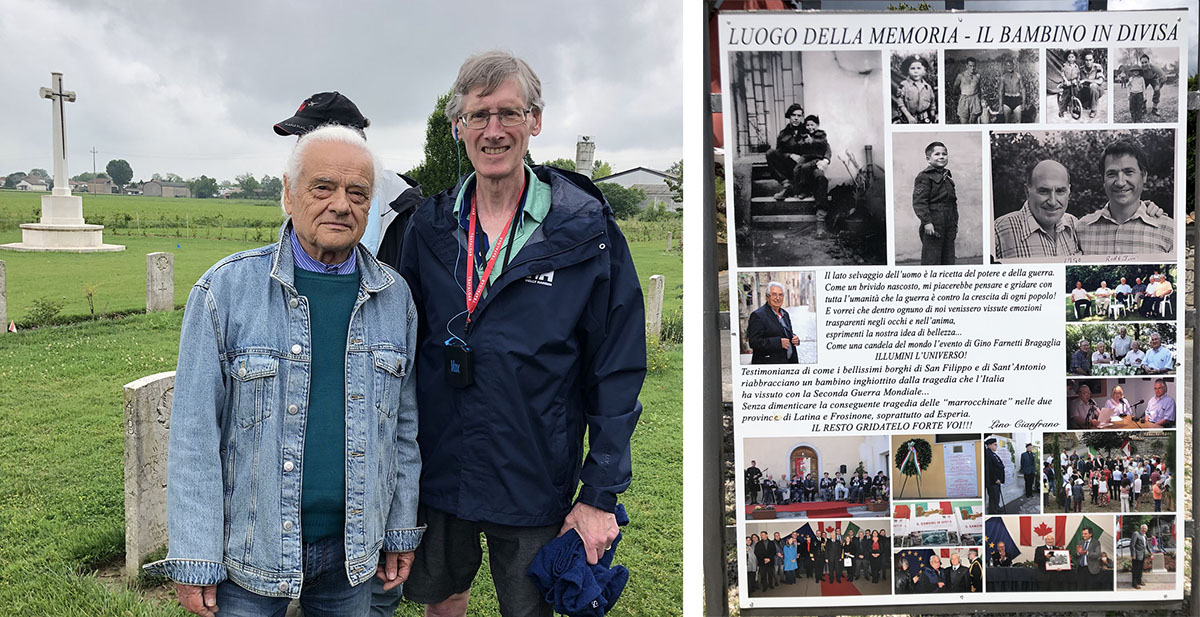
Following this ceremony, we proceeded to a narrow verdant valley near the town where, 80 years previous, the Canadian First Division launched a morning attack on the Adolf Hitler Line. Breakfast had been a slice of spam, four hardtack biscuits and tea. Along the line, machine gun bunkers, barbed wire, mine fields and tank traps awaited the Canadians. In their narrow sector, the PPCLI charged through a waist-high wheat field, shrouded in mist, enclosed on one side by a ridge and on the right by a creek. It was like “advancing up a bathtub”. This would be the worst day of the war for the Patricia’s; 58 Killed, 162 wounded, and 27 missing. They started the day with 324 men and ended it with 77. Their commander reported that evening to his superiors, “Those were fine boys, now they’re all gone. They’re all gone.” The Patricia’s veteran unveiled an 80th-anniversary plaque to their remembrance. As Italian schoolchildren sang O’ Canada on a small bridge over the stream that 80 years ago held the bodies of the dead, tears came to my eyes. I was not alone.
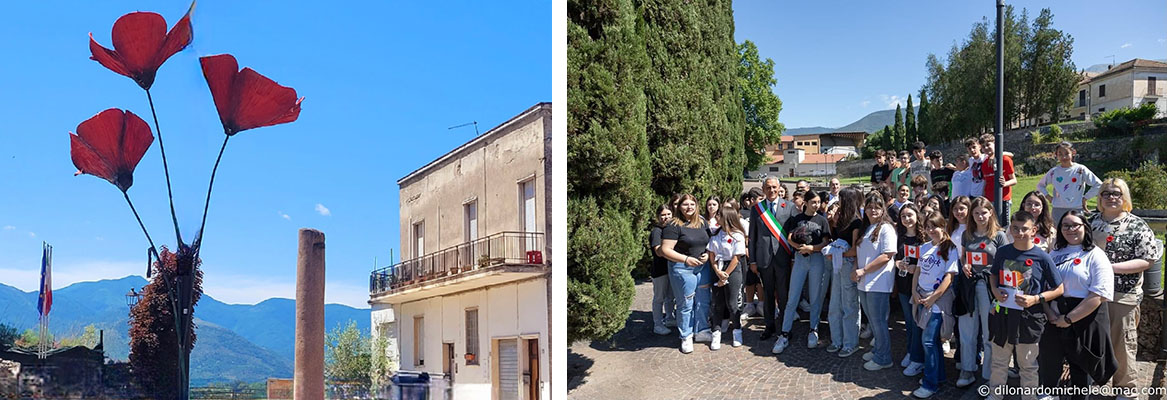
Upon breaching the Hitler Line, the Canadians continued fighting a few miles up the road to the town of Pontecorvo, which they liberated on May 24, 1944. The town was nearly destroyed in the fighting and rebuilding would take 15 years after the war. But the townspeople warmly remembered when “the Canadians came.” The town square is adorned with large poppy sculptures and a 25-lb field artillery gun, highlighting the contribution of those units to the Canadian army. Again, the school children marched to the monument honouring the Canadians, speeches were given in thanks and remembrance, and older townsfolks spoke to smaller groups of what they remembered.
A couple of videos from 80th anniversaries of liberations in Italy held last week. In Pontecorvo and other small towns in the Liri Valley,
soldiers are remembered with respect, gratitude and reverence. pic.twitter.com/sHWd3hLYkO
— Dan McCarthy (@DanMcCOtt) June 5, 2024
A General in the Italian military represented his government. We, the tourists and pilgrims of sorts, formed the Canadian contingent. Following the ceremonial unveiling of an 80th-anniversary plaque, we were treated to a reception and lunch at the Town Hall. The Mayor insisted we all sign the guest book. The custodian of the cathedral showed us a registry pulled out of the rubble on the day of liberation that three Canadian soldiers signed. These same soldiers scaled the blasted steeple and rang the bells in celebration. The bells rang out again during our visit, and again, a tear came to my eyes. The Italian people have not forgotten.
The following day, we travelled to the Benedictine Crossroads, barely a hamlet, just west of the town of Roccasecca. During the crossing of the nearby Melfa River in May 1944, Major John Mahony of the Royal Westminster Regiment was awarded the Victoria Cross, one of three bestowed upon Canadians in Italy. Three rows of plastic chairs were arrayed in the courtyard of a church built over the stones of the ancient road between Rome and Naples. The stones are visible through a plexiglass floor. A large Italian tri-colour flag was draped on the church wall with the Canadian flag standing beside.
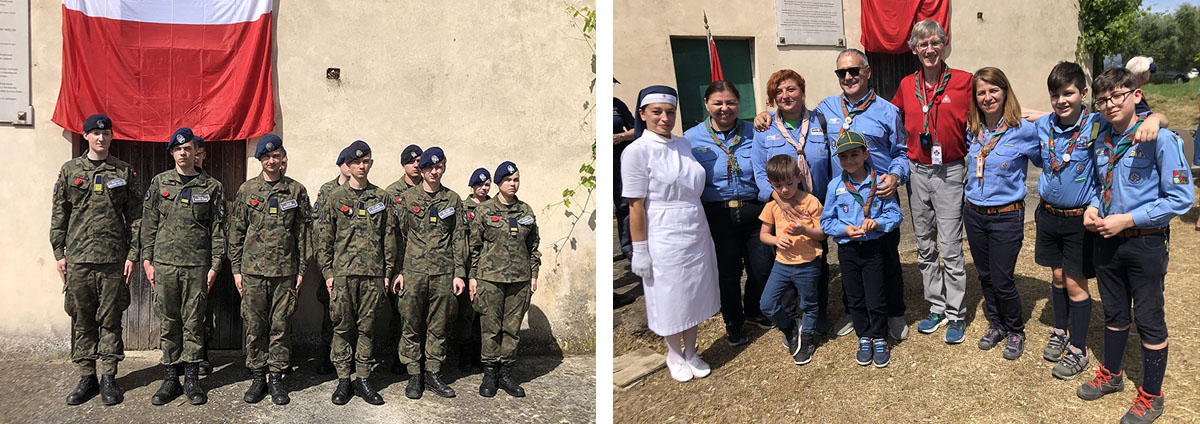
An honour guard of young Polish soldiers stood at attention in the hot sun under the stern eye of their commander. Again, that town’s Mayor spoke as a group of young Beaver and Cub Scouts fidgeted in the heat. For red, I had worn a Scouts Canada golf shirt, and I was instantly taken in as one of them. I was gifted a group necker and a Tau cross of St. Francis. They were so appreciative of our Canadian presence at their small country ceremony. An older gentleman spoke of that day as Canadians liberated his neighbouring village of Colfelice. He especially remembered George Dominick of Calgary, a soldier with the Westminster Regiment who found more than 100 civilians hiding under a bombed bridge, and told them they were safe, they could come out, the Canadians had arrived.
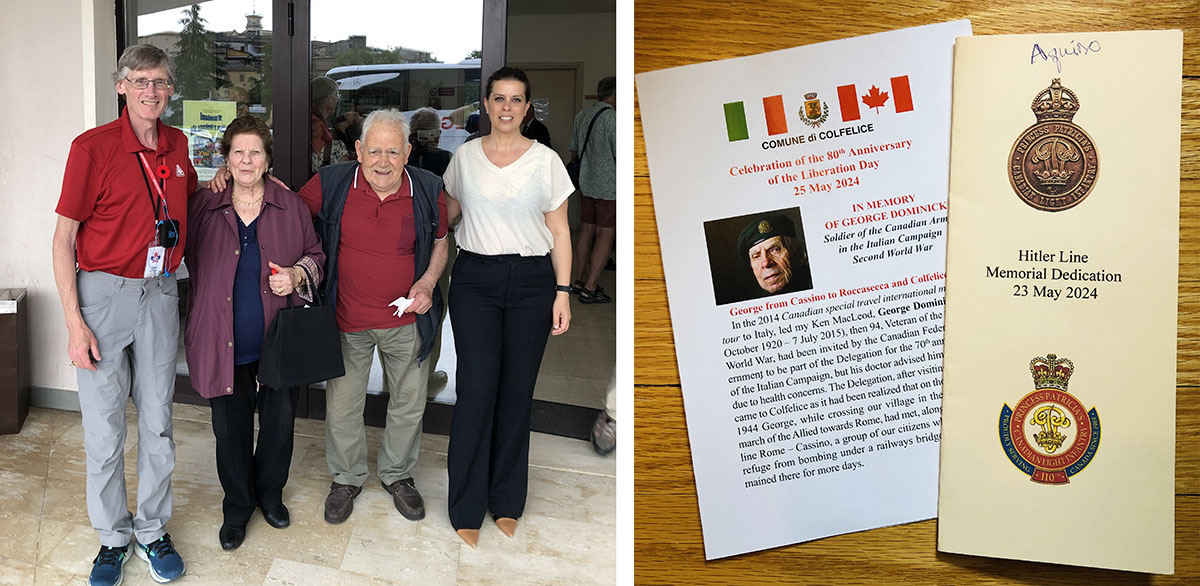
Our country seems to have limited bandwidth for remembrance. We honour rightly Vimy, D-Day, the liberation of the Netherlands, and Dieppe at times. But our national institutions and leaders remember little else. More than 6,000 Canadians are buried in Italy, and 20,000 were wounded. They fought the Nazis tenaciously and bravely, and won. They treated the Italian people with compassion and respect. They fed them where possible, and took in orphaned children. And the Italian people remember, with great warmth and respect for their liberators.
And what of the D-Day Dodgers? They treated Lady Astor’s slur with the derision it deserved. And a song was written for them, with the first verse written in mirth:
“We are the D-Day Dodgers way out in Italy
Always on the vino, always on the spree
Eight Army scroungers and their tanks
We live in Rome among the Yanks
We are the D-Day Dodgers in sunny Italy”
The song ends though on a deathly serious note. Lest we forget.
“Look around the mountains, in the mud and rain
You see the scattered crosses, there’s some that have no name
Heartbreak and toil and suffering gone
The boys beneath them slumber on
They are the D-Day Dodgers who stay in Italy”
HEADER IMAGE: (LEFT TO RIGHT) The Price of Peace monument in Ortona, Italy. An Italian woman shows pride in her Canadian-Italian friendships. Captain Paul Triquet of the Royal 22nd (Van Doos) was awarded the Victoria Cross for bravery at this spot near Ortona. Canadian war dead honoured at an Italian cenotaph in Grammichele, Sicily.



